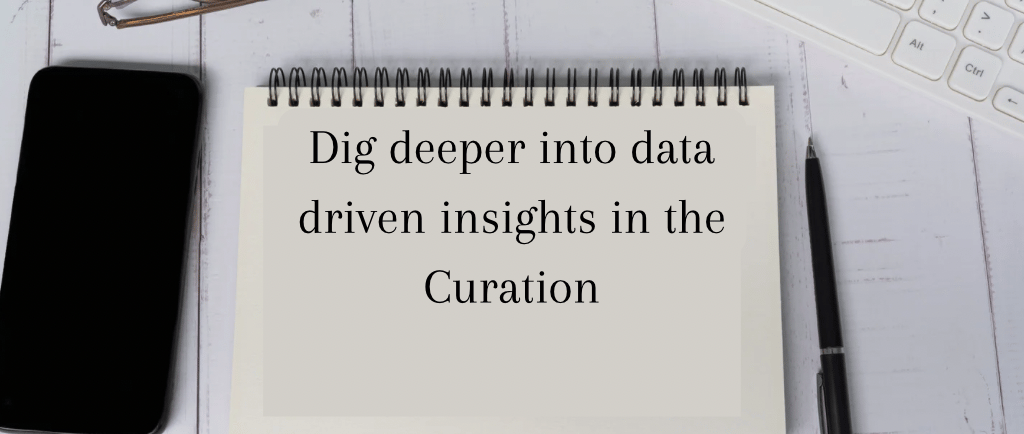The Power of Data-Driven Insights in Customer Curation
Kylo B. Ciaó


In the intricate tapestry of customer curation, the role of data-driven insights serves as the masterstroke, reshaping the traditional landscape of business-customer relationships. This facet of the curation process delves into the realms of analytics, algorithms, and actionable intelligence, unlocking a profound understanding of customer behaviors and preferences.
At the core of this approach lies the collection and analysis of vast datasets. Modern businesses, equipped with advanced technology, meticulously gather information from various touchpoints – online interactions, purchase histories, social media engagements, and more. This data forms the raw material, a virtual palette that businesses can use to create personalized experiences and build lasting connections with their customers. The first step in harnessing the power of data-driven insights is the collection of customer data. This process involves the use of various tools and technologies to capture information about customer interactions, preferences, and behaviors. From website analytics to customer relationship management (CRM) systems, businesses have access to a wealth of data that can provide valuable insights into their target audience.
Once the data is collected, the next step is to analyze it. This is where analytics and algorithms come into play. By applying statistical models and machine learning algorithms to the data, businesses can uncover patterns, trends, and correlations that may not be immediately apparent. These insights can then be used to make informed decisions and drive strategic initiatives. One of the key benefits of data-driven insights is the ability to segment customers based on their characteristics and behaviors. By dividing the customer base into distinct groups, businesses can tailor their marketing efforts and communication strategies to better meet the needs and preferences of each segment. This level of personalization can significantly enhance the customer experience and increase the likelihood of customer loyalty and repeat business. Furthermore, data-driven insights can also help businesses identify potential areas for improvement. By analyzing customer feedback and sentiment data, businesses can pinpoint pain points and areas of dissatisfaction. This information can then be used to make targeted improvements to products, services, and overall customer experience.
In this way, data-driven insights not only inform decision-making but also drive continuous improvement and innovation. Another important aspect of data-driven insights is the ability to predict customer behavior. By analyzing historical data and applying predictive analytics techniques, businesses can forecast future customer actions and preferences. This foresight enables businesses to proactively address customer needs, anticipate demand, and optimize their marketing and sales strategies. By leveraging data-driven insights, businesses can stay one step ahead of their customers and deliver tailored experiences that exceed expectations. In addition to predictive capabilities, data-driven insights also empower businesses to measure the effectiveness of their marketing campaigns and initiatives. By tracking key performance indicators (KPIs) and analyzing campaign data, businesses can assess the impact of their efforts and make data-informed decisions about resource allocation and strategy refinement.
This level of visibility and accountability is crucial in today's competitive business landscape. However, it is important to note that data-driven insights are not a panacea. While they provide valuable information and guidance, they should always be complemented by human expertise and intuition. Data-driven insights should be used as a tool to inform decision-making, not as a substitute for critical thinking and strategic judgment. The human element is still essential in interpreting the data, understanding the nuances, and making contextually appropriate decisions. In conclusion, data-driven insights have revolutionized the way businesses curate their customer relationships. By harnessing the power of analytics, algorithms, and actionable intelligence, businesses can gain a deep understanding of customer behaviors and preferences. This knowledge enables businesses to create personalized experiences, drive customer loyalty, and optimize their marketing and sales strategies. However, it is important to remember that data-driven insights should be used in conjunction with human expertise to ensure the best possible outcomes. The future of customer curation lies in the seamless integration of data-driven insights and human intuition, creating a truly personalized and impactful customer experience.


